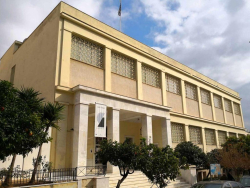Archaeological Museum of Piraeus

Archaeological Museum of Piraeus
The mission of the Archaeological Museum of Piraeus is to host the antiquities which resulted from the excavations in the wider area of the city, the western coast of Attica and the Argosaronic islands. The precious archaeological items in the collections of the museum range from the 18th Century B.C. through the 4th Century A.D., bringing into light the evolution of the ancient city of Piraeus, the most significant port city of the ancient Greek world and gateway to Athens.
The museum is housed in a 2-story building, flanking the west and south side of the Hellenistic theater of Zea and has a total area of 1,394 sq.m. Its exhibition rooms occupy the ten halls of the two floors (1,044 sq.m.), While in the basement (350 sq.m.) There are the workshops for the maintenance of clay, metal and stone objects, as well as the museum's store where archaeological findings from the area of Piraeus, the coastal zone and the islands. The building of the old museum (330 m²), Located right next to it, is now used for storage, while an outdoor sculpture exhibition is set up in the archeological site of Zea Theater.
The permanent exhibition of the Piraeus Archaeological Museum includes findings of the surviving and systematic excavations of Piraeus, Kallithea, Moschato, Attica beach to Varkiza, Argosaronikos and Kythira islands, as well as 2 remarkable private collections, the Meltepoulou-Nomidou Collection, and the Gerulanos Collection. Some of the exhibits of the museum are rare, such as the famous bronze statues, the impressive monument of Kallithea, the figurines of the Minoan sanctuary of Kythira and the Mycenaean sanctuary of Methana.








